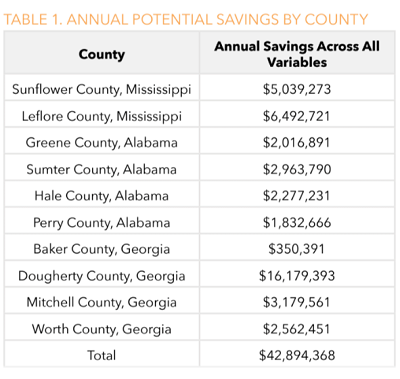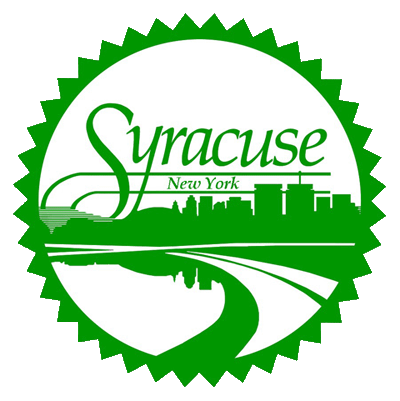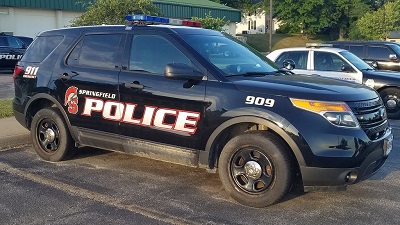
Fast, affordable Internet access for all.

Maryland officials have announced that the state is doling out $92 million in new broadband grants to expand access to affordable broadband. The latest round of funding was made possible via the Connect Maryland Network Infrastructure Grant Program, and will help expand broadband access to 14,500 unserved locations statewide.
According to a state press release, this latest round of funds should help fund portions of 35 different projects scattered around the state. A full breakdown of award winners indicates that while Comcast and Verizon secured $14.4 million and $11 million respectively in new funding, smaller ISPs and cooperatives were, unlike in many states, well represented.
Quantum Telecommunications, a smaller local ISP founded in 1995, was slated to receive $15.3 million in funding to connect 1,693 locations to broadband. Choptank Electric Cooperative, first founded in 1938, was among the biggest award winners, receiving $16 million to deliver broadband to 1,693 locations currently lacking broadband access.
In partnership with the Southern Rural Black Women’s Initiative (SRBWI), today ILSR is releasing a new report that examines the link between high-speed Internet infrastructure, access to healthcare, and the economic implications involved.
The report – “Increased Wellness and Economic Return of Universal Broadband Infrastructure: A Telehealth Case Study of Ten Southern Rural Counties” – has particular relevance for those living in rural broadband deserts as it details how universal, affordable, broadband infrastructure would return $43 million per year using telehealth across 10 counties in the Black Belt of Alabama, Georgia, and Mississippi.
At a virtual press briefing today, SRBWI leaders and organizers were joined by Dr. Sandra B. Reed of Emory Healthcare; as well as ILSR Senior Researcher and the report’s lead author, Ry Marcattilio, to explain how robust broadband infrastructure could pay for itself in short order and open up untold access to healthcare, educational opportunities, economic development, community engagement, and other benefits along the way.

“It’s easy to miss the connection, but hard to overlook what’s at stake as rural hospitals close and the cost of transportation to get to far-off healthcare facilities presents a real barrier. This is about access to healthcare and Black women being denied the opportunity to take advantage of telehealth. The broadband infrastructure that’s needed for that just isn’t there,” said Shirley Sherrod, SRBWI State Lead for Georgia and Director of the Southwest Georgia Project in Albany Georgia.
Broadband … to Access Longer, Healthier Lives
A bipartisan coalition of lawmakers continues to make slow but steady progress on legislation that would make federal broadband grants tax exempt, providing significant relief for big and small companies alike trying to bridge America’s stubborn digital divide.
U.S. Representatives Jimmy Panetta (D-CA) and Mike Kelly (R-PA) and Senators Mark Warner (D-VA) and Jerry Moran (R-KS) recently reintroduced the Broadband Grant Tax Treatment Act (BGTTA) in both the House and Senate. The bill would amend IRS code to ensure that funding for broadband deployment from the Infrastructure Investment and Jobs Act (IIJA) and the American Rescue Plan Act (ARPA) will not be considered taxable income.
“We have made significant strides to ensure that access to high-speed internet is available to more Americans than ever,” Senator Warner said in a statement. “But taxing broadband investment awards diminishes our efforts. This legislation ensures that individuals and businesses are able to reap the benefits of every dollar set aside for broadband expansion and deployment so that we can accomplish our goal of bringing reliable broadband to every corner of Virginia.”
The exemptions included in the bill would also apply retroactively to any qualified grant amounts received in 2021 and 2022.
Representing 26 towns across Massachusetts, from Cape Cod to Chelsea, an informal group of mostly town officials have formed the Massachusetts Broadband Coalition in search of a way out of a broken broadband market to ensure everyone in their individual communities has access to high-speed Internet.
The newly-formed coalition has recently started to meet monthly to share information about what kind of alternatives there might be, or could be, to the big cable monopoly provider in their towns.
Questioning Monopoly Rules Without Reinventing the Wheel
The coalition, which held its first meeting in January, was convened by Robert Espindola, Fairhaven Selectmen and the board’s liaison to the town’s broadband study committee. And though the coalition is “in its infant stages,” as Espindola recently shared with ILSR, one common theme has emerged from each participating member.
“No doubt the common theme is: there’s no competition,” he said. “That’s how it started in Fairhaven for us. When we were negotiating our (franchise) agreement with Comcast, people in the community were asking: ‘why can’t we get competition?’”
When we first came together it was really more just to learn from each other, what each community was doing. And we wanted to see if we could find ways to work more efficiently and not reinvent the wheel.
Indeed, communities across the nation have set out to tackle local connectivity challenges head-on with a community broadband approach without having to reinvent the wheel. Some have built, or are building locally-controlled, publicly-owned open-access fiber networks to create the conditions for competition. Other cities and towns are building, maintaining, and operating their own successful municipal broadband networks. While still others have opted to enter into a public-private partnership with an independent ISP to build out a community-wide network.
Public-Private Partnerships Come into Focus
As communities across the country are implementing digital equity plans and looking to expand access to high-speed Internet connectivity, the second Building for Digital Equity event (#B4DE) of the year comes weeks ahead of when states will receive their BEAD funds from the bipartisan infrastructure bill.
Save the date and join us June 7 at 3 pm ET for #B4DE! As with previous B4DE events, this will be another virtual gathering that will offer up strategies to help simplify the complexities (and opportunities) of broadband connectivity. This event, sponsored again by UTOPIA Fiber, will focus on ways communities can foster meaningful action and advocacy.
Fresh off their most successful Net Inclusion gathering ever, the National Digital Inclusion Alliance (NDIA) will join ILSR’s Community Broadband Networks (CBN) team for the event as NDIA’s Pamela Rosales will co-host the livestream along with CBN Director Christopher Mitchell.
The 75-minute free event promises to be informative and include a series of fun interactive games. It will also debut a point-counterpoint component that will focus on the pending release of BEAD dollars for both rural and urban areas and the challenges around mapping as states try to determine how to get the biggest bang for the buck.
Register now for the Building for Building for Digital Equity Event.
See our previous B4DE livestreams below:
Connect Humanity and the Appalachian Regional Commission (ARC) have struck a new $7.9 million coalition partnership they say will help deliver affordable, next-generation broadband networks to more than 50 communities across 12 Appalachian states.
The project announcement states ARC has already awarded $6.3 million via its new Appalachian Regional Initiative for Stronger Economies (ARISE) program, which is designed to help marginalized communities prepare for the more than $45 billion in Broadband Equity, Access, and Deployment (BEAD) and Digital Equity Act (DEA) funding arriving later this year.
Funding from both programs is currently bottlenecked behind the Federal Communications Commission’s longstanding and troubled efforts to accurately map broadband access. That’s been a particular problem in rural America, where fixed and wireless broadband providers have overstated real-world broadband access for the better part of a generation.
ARC data indicates that rural Appalachian communities, which stretch from New York State to Mississippi, are far more likely to have been left stuck on the wrong side of the digital divide. That’s thanks in part to telecom monopolies that either refuse to revest in lower ROI rural areas, or have failed to live up to past taxpayer subsidization obligations.
Connectivity in the region lags well behind the national average, and in 26 Appalachian counties, fewer than 65 percent of households have a broadband subscription. 88 percent of Appalachian households currently have one or more computer devices—nearly four points below the national average. Only 23 Appalachian counties were at or above that same national average, and all of them were in metropolitan areas.
City officials in Syracuse, New York have formally approved a new project to provide heavily discounted wireless broadband to low-income city residents. The plan is being made possible courtesy of the $1.9 trillion American Rescue Plan Act (ARPA), $123 million of which has been doled out to Syracuse city leaders for various urban improvement efforts.
After issuing a request for proposals (RFP) last year, Syracuse officials say they’ve selected Community Broadband Networks FLX to help build the fledgling, city-owned network. City officials say the finished project, which is estimated to be completed by the end of the summer, should cover 10 Census tracts in the south, southwest and west sides of the city for a total project cost of somewhere around $3.5 million.
Once completed, the network should provide wireless broadband service at speeds up to 100 megabits per second (Mbps) to roughly 2,500 Syracuse residents currently living below the poverty line in a city of 146,000.

On Monday, March 27 the Syracuse Common Council voted to formally approve the project, which will utilize fixed wireless technology in a bid to reduce overall project costs. Participating users will be given a free router and modem, which in turn will connect to city transmitters affixed to local city-owned buildings and utility poles.
Summit County, Ohio says it’s making progress on a $75 million, 125-mile fiber-optic ring made possible courtesy of American Recovery Plan Act (ARPA) funds. The project will start by providing gigabit connectivity to all county first responders, after which county leaders say they’ll focus on shoring up lagging broadband access to long-neglected communities.
A 2017 report by an outside consultant found that Summit County, like so much of America, struggles with a dearth of affordable broadband access thanks to a heavily monopolized U.S. broadband market. The county’s fixed-line broadband market is dominated by two major incumbents, Centurylink and Comcast, and wireless access remains spotty across large swatches of the county’s more rural territories.
Introduced last year, Summit County Executive Ilene Shapiro noted the network will first connect all 31 city, village and township governments to gigabit speed broadband and a data center. The network is expected to cost as much as $75 million. $35 million of that total will be pulled from the $105 million in ARPA funding received by the county.

Summit County’s interest in more affordable broadband extends back years. County leaders played a key role in beating back monopoly efforts in the state legislature to effectively ban publicly-owned broadband networks. Once those efforts were defeated, county leaders began formulating their broadband expansion plans in earnest.
As Los Angeles County officials work with community coalitions to improve high-speed Internet access in underserved communities across the region, the Digital Equity LA Summit last week focused on the challenges ahead. Front and center: urging state officials to fix the broadband priority maps the state will use to target where to invest $2 billion in state broadband grant funds with the state months away from receiving over a billion additional dollars from the federal BEAD program.
Organized by the California Community Foundation (CCF) and held on the University of Southern California (USC) campus, the summit brought together hundreds of digital equity advocates, state, county, and city officials; many of whom are part of a broad coalition (that includes ILSR) known as Digital Equity Los Angeles whose mission is to bring “equitable access to fast, reliable, and affordable broadband for every Angeleno.”
After morning introductions, Sanford Williams – Special Advisor to FCC Chairwoman Jessica Rosenworcel – gave the morning keynote address. Williams highlighted his work at the FCC and his new role as chief of the agency’s digital discrimination task force, which is charged with combating the kinds of digital discrimination brought to light by a recent Digital Equity LA study that found higher poverty neighborhoods in LA (which tend to be mostly made up of people of color) pay anywhere from $10 to $40 more per month than mostly white, higher-income neighborhoods for the exact same service.
Recent Success, Future Challenges
The summit started off on a high-note with an overview of the successes coalition members advocated for over the past year, including the formation of a new statewide coalition (the California Alliance for Digital Equity) and, to the chagrin of wireless providers, the veto of a proposed state law (AB 2749) – which Gov. Newsom said, if passed, would “undermine the last-mile grant program by creating additional delays in its implementation.”
Last Friday was a major milestone in the process of moving $42.5 billion from the federal government to states to distribute mostly to rural areas to build new, modern Internet access networks. January 13th marked the deadline for error corrections (called challenges) to the official national map that will be used to determine how much each state will get.
As an organization that has worked in nearly all 50 states over the past 20 years on policies to improve Internet access, we spent the last few weeks struggling to understand what was actually at stake and wondering if we were alone in being confused about the process. Despite the stakes, almost no expert we talked to actually understood which challenges – if any – would fix errors in the map data before it was used to allocate the largest single federal broadband investment in history.
Update: On January 13th, Joan Engebretson confirmed in Telecompetitor that the location challenges deadline was October 30, 2022, and not Jan 13, 2023.

This article will explore what is going wrong with the distribution of that $42.5 billion, the mapping process, and continued failure of the Federal Communications Commission (FCC) to show competence in the broadband arena. And it offers ways to fix these important problems as every jurisdiction from Puerto Rico to Hawaii feels overwhelmed by the challenge.
The $42.5 billion guarantees each state $100 million and a large additional sum calculated proportionally based on the number of locations in each state that don’t have adequate high-speed Internet service. States that already made significant investments in better rural networks and made strides toward fast universal Internet access for all households - like Massachusetts - will likely not receive much more than $100 million, while extremely large states with many high-cost rural residents - like Texas and California - will receive billions.